In this guide, I’ll share the tips, tools, and lessons that have helped small businesses grow without burning out. Whether you’re just getting started or looking to refresh your marketing strategy, these ideas are built to help you stand out and scale up using an inbound marketing approach that attracts customers by being helpful, not pushy.
Table of Contents
What is small business marketing?
Let’s take a step back for a second and talk about what small business marketing really is.
At its core, small business marketing is the process of promoting your products or services to attract, engage, and retain customers. It‘s about making sure the right people know who you are, what you offer, and why they should care. Whether you’re promoting a product, service, or your own expertise, your job is to reach the right people and give them a reason to trust you.
In every small business I’ve worked with, the approach looked a little different. Some focused on email, others relied on events or word of mouth.
The point is: there's no one-size-fits-all playbook. The key is figuring out what works for you — and doubling down.
A recent study by SimpleTexting found that 75% of small businesses have a marketing plan, and those with a structured plan are 6.7 times more likely to report success than those without one. So yeah, having a plan matters.
The tips below come from real-world experience — things I’ve seen work across lean startups, solo teams, and growing companies. Think of them as your starting point. When the basics are in place, every strategy you layer on top will work harder for you.
What To Do Before Marketing Your Small Business
- Define your target audience.
- Clarify your value proposition.
- Determine your brand identity and visuals.
- Map your customer journey.
- Choose your core marketing channels.
- Build a functional, mobile-friendly website.
- Set up basic lead capture on your site.
- Set up a CRM to manage contacts and leads.
Before you dive into marketing, it’s worth slowing down to set yourself up right. I’ve seen so many small businesses burn time and money trying to promote a product or service without a clear plan — and end up frustrated when nothing sticks.
The truth is, your marketing won’t work if your foundation is shaky. This section covers the steps I’ve found most helpful to get in place before you start promoting — so that when you do, your message lands and your time pays off.

1. Define your target audience.
One of the biggest mistakes I’ve seen small businesses make is trying to market to everyone. It spreads your message thin — and rarely connects. Instead, narrow your focus. Who’s the best-fit customer? What are they struggling with? Where do they spend time online?
When I started working with my first fintech startup, they described their target audience as “people who need help with HR stuff.” Not only was that way too broad, but it didn’t reflect who was actually buying. So we looked at who had converted recently and dug into what their day-to-day looked like.
Turns out, most of them were overworked finance managers at healthcare companies — not HR leads. They were the ones feeling the pain of messy payroll systems and were actively looking for a fix. That small shift in perspective helped us change our messaging, rework the website, and even adjust which channels we were showing up on.
The more specific you can get, the easier everything else becomes — ads perform better, content gets more engagement, and your leads are actually qualified. It doesn’t have to be complicated: start with your current customers. Who do you love working with? Who seems to “get it” fastest? That’s a great place to begin.
Try jotting down a few details about your ideal customer:
- What job title or industry are they in?
- What’s stressing them out at work?
- What’s happening right before they find you?
Once you’ve got that, give them a name. Not a real one — just a persona you can picture when you’re writing or building campaigns. It sounds simple, but it works.
If you want help building out a full persona, HubSpot’s free persona generator is a great tool for organizing your thoughts.
Download Free Buyer Persona Templates
2. Clarify your value proposition.
This is one of those things that feels obvious — but often gets missed. If someone lands on your homepage or social profile, would they immediately know who you help, what you help them do, and why they should care?
One company I worked with had an entire paragraph on the homepage describing “a better way to manage internal processes.” It sounded fancy, but it didn’t really mean anything. So we rewrote it to say: “Spot payroll errors before they cost you. Automate your internal audit process with AI.”
Suddenly, it clicked. Demo requests went up. Prospects finally got what we did.
Writing a strong value prop isn’t about sounding smart — it’s about being clear. Don’t hide behind buzzwords. Lead with outcomes. Use the language your best customers already use when they describe why they chose you.
If you’re feeling stuck, try answering these questions:
- Who’s this for?
- What problem are you solving?
- Why are you different or better?
Still not sure? Try filling in this prompt::
“We help [target audience] achieve [value] without [pain point].”
For example, when filled in, it should sound something like: “We help busy HR teams automate payroll audits without manual spreadsheets.”
Whether it's your pricing, your process, your values, or your customer service, that difference should be easy to spot across your homepage, email campaigns, and social content.
Pro tip: If you’re still not sure where to start, try answering this: What would your happiest customer say about working with you?
3. Determine your brand identity and visuals.
You don’t need a fancy visual identity to get started — but you do need to show up consistently. When your Instagram looks nothing like your website, and your emails feel like they were written by a totally different person, it creates friction. And friction costs trust.
I recently helped an early-stage SaaS client settle on a simple color palette, two clean fonts, and a brand voice that matched how their sales team talked. Nothing groundbreaking — but it made everything feel way more polished. And will save them hours of decision-making down the line.
Just keep it simple:
- Choose 2 colors you’ll use across your site and social channels.
- Pick 1-2 fonts (you can find tons of free Google Fonts).
- Decide how you want to sound: Friendly? Witty? Reassuring?
Pro tip: Make a one-page “brand cheat sheet” and share it with anyone writing or designing for your business. It’ll keep things consistent without needing a 30-slide brand book.
4. Map your customer journey.
Before you spend money on ads or start writing blog posts, take a minute to zoom out. How does someone go from not knowing you exist… to becoming a loyal customer?
Think about what your customer needs to see, hear, or feel at each stage — from awareness to decision. What’s missing? What’s working?
At a company I recently worked with, we realized our content was driving solid traffic, but leads weren’t converting. People were reading blog posts and even signing up for our newsletter, but they weren’t taking the next step. So we walked through the journey from their perspective.
Unsurprisingly, we found a gap. We hadn’t clearly explained what would happen next. There were no nudges, no case studies, no middle-of-funnel content. We were assuming people were ready to buy — when in reality, they still had questions.
So we created a short email sequence that followed up with educational content, added a “Who It’s For” section to our homepage, and made our CTA buttons more specific. Those small changes helped fill the gaps and move people closer to converting.
To get started, try sketching out a simple version of your current customer journey:
- How they find you (search, referrals, social, etc.).
- What convinces them to trust you.
- What triggers them to convert (book, buy, subscribe).
- What happens after they do.
Even the act of writing it out can help you spot small moments where people are falling through the cracks — and give you ideas to fix them and effectively plan your go-to-market (GTM) strategy.
5. Choose your core marketing channels.
When you’re a small team, trying to show up everywhere is a fast track to burnout. You don’t need to be on every social platform or chase every trend — you just need to be in the right places for your audience.
At a startup I worked with, we initially tried it all: Instagram, LinkedIn, Twitter, newsletters, blog posts… even a podcast idea got thrown around. But once we looked at where actual leads were coming from, it was clear that 90% of our best-fit customers were engaging through LinkedIn and email. So we cut the rest and focused on doing those two things really well. Engagement went up. So did sanity.
Start with what you know:
- Where does your audience spend time online?
- Where do you already have some traction?
- What can you realistically maintain with your current bandwidth?
For example, if you’re a visual brand (like beauty or lifestyle), Instagram or Pinterest might make sense. If you’re selling to other businesses, LinkedIn and email might work better. If you’re trying to rank for long-tail keywords, SEO and blogging should be your focus.
Once you know your top 1–2 channels, build a simple rhythm — then commit to it for a few months. Test, tweak, and then consider layering on more.
6. Build a functional, mobile-friendly website.
Your website doesn’t need to be fancy. But it does need to be clear, fast, and easy to navigate — especially on mobile. Most of your visitors are going to land on your site, scroll for a few seconds, and decide whether to keep going. You want that moment to work in your favor.
I recently helped launch a new site for a customer loyalty company who didn’t have the budget for a full design team. We used a clean, mobile-friendly template, added clear messaging to the homepage, and made sure the most important buttons were easy to find. It wasn’t flashy — but it was professional and it converted.
The best way to start is to start simple. At a minimum, make sure your website:
- Loads fast (especially on mobile).
- Explains what you do in the first few seconds.
- Has a clear next step (like a contact form or sign-up button).
- Includes basic pages: Home, About, Services or Product, and Contact.
If you‘re short on time or budget, HubSpot’s starter bundle lets you build a clean, mobile-friendly site using drag-and-drop templates with zero coding required.
Pro tip: After you publish, view your site on your phone. If you have to pinch, scroll sideways, or dig to find info, it’s time to clean things up.
7. Set up basic lead capture on your site.
Getting people to your website is a big win. But if they leave without a trace, you’re missing out on future customers. That’s why you need a simple way to capture leads — before you start pouring time and money into promotion.
At one startup I worked with, we were running a solid SEO strategy. Blog traffic was climbing, but conversions were flat. So we added a short lead magnet content offer to the most popular posts: a downloadable checklist that matched the topic. Visitors could enter their email to get it, and boom — we started collecting warm leads without changing much else.
Lead capture doesn’t have to be complicated. You just need:
- A short form (name + email is often enough).
- A clear reason to sign up (newsletter, discount, guide, early access).
- A simple way to deliver the follow-up (email tool or automation).
If you’re not sure what to offer, think about what would be genuinely helpful for someone visiting your site. A guide, a calculator, a checklist — anything that makes their life easier.
If you’re looking for tools to help, HubSpot’s free form builder is a great place to start. And if you’re keeping things simple, even just embedding a basic form at the bottom of your homepage, blog posts, or landing pages can be surprisingly effective.
Pro tip: Place your lead capture form where people are already engaging — like at the bottom of blog posts or on your “About” page. These visitors are more likely to convert than someone landing on your homepage cold.
8. Set up a CRM to manage contacts and leads.
If you‘re still tracking leads in a spreadsheet, I get it — I’ve done it too. But it gets messy fast. Once people start signing up, emailing you, or showing interest, it's way too easy to lose track of who’s who, what stage they’re in, or when you last followed up.
That’s where a CRM system comes in. It helps you stay organized, see your pipeline at a glance, and keep track of every customer interaction in one place. Even if you're a team of one, having a CRM early makes it way easier to scale later.
At one company I worked with, we didn’t implement a CRM until we already had a few dozen warm leads — and we regretted waiting. Once we switched to HubSpot’s CRM, we could actually track which leads were converting, which emails were working, and who needed a follow-up. Our team felt more focused, and nothing slipped through the cracks.
There are tons of options out there, but HubSpot’s CRM is an easy (and free) one to start with. It’s built for small businesses and integrates seamlessly with tools like email marketing, forms, and lead scoring — so you’re not scraping everything together later.
The earlier you get this in place, the easier it’ll be to stay on top of your growth … trust me.
Small Business Marketing Strategies
With your foundation in place, now it’s time to put your message into the world. This is where you’ll start creating content, building relationships, and finding new ways to reach the right people.
The strategies below are the ones I’ve seen work best across early-stage startups and small teams. Some help you lay the groundwork. Others are about showing up consistently or expanding your reach. You don’t need to tackle all of them — just pick a few that feel doable, test what works, and build from there.
Get set up.
These are the basics — the things that help you build a marketing engine that won’t fall apart under pressure. This is about creating content that earns trust, setting up tools that track your impact, and laying the groundwork for more consistent growth.
1. Create foundational content for your website.
If your website is the digital front door of your business, your content is what gets people to step inside — and stick around. I’ve seen so many small teams launch a site that’s technically live … but missing the pieces that actually build trust.
Foundational content is the stuff people look for when they’re trying to decide if you’re legit. Be honest, how many times have you googled, “Is [company] a scam”?
In order to make sure no one’s doing that when they land on your website, try to include:
- A clear explanation of what you do and who it’s for.
- An FAQ that handles common objections.
- A pricing or “How It Works” page (even a simple one).
- A story about why you started the business or what makes you different.
One small business I worked with didn’t have a pricing page for months because they were still “figuring things out.” But prospects kept bouncing because they couldn’t tell if it was even worth booking a call. Once we added a “Pricing starting at…” section and a visual breakdown of the plan tiers, conversions nearly doubled.
Don’t wait for it to be perfect. Start with the basics. Then update as you go. Take it from me, a perfectionist.
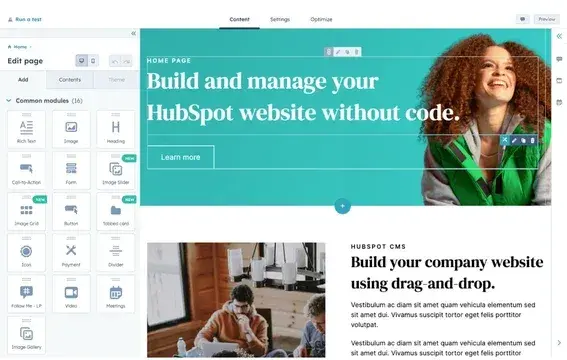
2. Start a blog and optimize posts for search engines.
I’ll be honest: blogging takes time. But when it’s done well, it becomes one of the most sustainable ways to bring in new traffic over the long term — without paying for every click.
Remember that fintech startup I worked with? Well, we launched a blog with just two goals: answer real customer questions and rank for high-intent keywords. We didn’t post weekly or follow a strict calendar in the beginning. Instead, we focused on a few solid pieces that hit the mark. Those posts consistently brought in qualified leads, months after publishing.
The key? Think about what your ideal customer is googling right before they need you. Start there. You don’t need dozens of posts — just a few that are relevant, helpful, and optimized.
Pro tip: Use resources like Ahrefs, Semrush or HubSpot’s free SEO tools to find keywords your audience is searching for. Then build your posts around those topics, using clear headlines, simple structure, and real examples whenever you can.
Download Free Blog Post Templates
3. Track performance with website analytics.
If you’re not tracking what’s working, you’re basically marketing in the dark. And I’ve seen it happen — teams spend hours on blog posts or landing pages without ever checking whether anyone’s actually reading, clicking, or converting.
Website analytics help you understand what’s landing with your audience and where people are dropping off. You don’t need to be a data wizard — just look for simple signals:
- Which pages are getting the most traffic?
- Where are visitors coming from?
- What’s converting … and what’s not?
At one company I worked with, we discovered that our “About” page was one of the most visited — but it didn’t have a single CTA. We added a short sentence and a button to download a free report, and just like that, it became a top-performing lead source.
Pro tip: Set a reminder once a month to check your top 5 pages. See what’s performing—and build on it. With HubSpot, you can track traffic, leads, and even which CTAs are converting—right from your dashboard.

4. Build and segment your email list.
Your email list might just be your most valuable marketing asset — but only if you build it right from the start. I’ve worked with small teams who skipped this step and ended up with a messy spreadsheet of contacts, no clear opt-ins, and no idea who wanted what. It’s fixable, but trust me, it’s much easier to do it right the first time.
The good news? You don’t need thousands of subscribers. You just need the right people — and a system to keep them organized. That’s where segmentation comes into your email marketing strategy.
Start with the basics:
- One list for leads who downloaded a resource or signed up on your site.
- One for existing customers.
- One for anyone who’s requested a demo or contacted sales.
Even simple tags like “lead,” “customer,” or “inactive” can help you personalize messages and track performance later on.
At one early-stage company, we used these basic tags to trigger tailored emails—like onboarding tips for new customers, blog content for leads, and re-engagement emails for people who hadn’t opened in a while. Click-through rates jumped, and sales started asking for more campaigns because they could see the lift.
Pro tip: Most CRMs will let you segment your list automatically based on actions—like downloads, page views, or email engagement. Set those rules early, and you’ll thank yourself later.
Connect with customers.
Once your systems are in place, it’s time to put them to work. This next batch of strategies is all about showing up for your audience in ways that build trust and keep your business top of mind. Whether someone’s just discovered you or already joined your list, these tips will help you stay connected—and turn interest into action.
5. Set up automated email campaigns.
You don’t need to manually follow up with every new lead. In fact, one of the biggest time-savers I’ve used at small businesses is simple email marketing automation. A few well-timed emails can do a lot of heavy lifting — nurturing new contacts, sharing helpful info, and guiding them toward a decision.
At one startup I worked with, we created a three-part welcome sequence that went out automatically when someone downloaded a guide. The first email said thanks and linked to the content. The second introduced a customer story. The third offered a soft call to book a demo. It took an afternoon to set up — and brought in dozens of qualified leads every month.
You don’t need a huge workflow to get started. Just think about what someone needs to know after they sign up:
- Do they need a nudge to take the next step?
- Would a testimonial or resource help build trust?
- Can you answer a question before they ask it?
Pro tip: Tools like HubSpot’s email automation make it easy to build these sequences with drag-and-drop workflows without coding or stress.

6. Use personalized emails to nurture leads.
Automation is great for saving time — but it’s even more powerful when it feels personal. Just because an email is triggered automatically doesn’t mean it has to sound like a robot wrote it.
That’s why segmenting your email list early (like we talked about above) is such a smart move. It gives you a head start on sending the right message to the right people without starting from scratch every time.
Once someone joins your list, the goal isn’t just to stay in touch — it’s to stay relevant. Generic emails get ignored. But personalized ones? They can make someone feel like you get them.
I’ve seen small teams double their email click-through rates just by segmenting leads based on where they signed up or what content they downloaded. It doesn’t require fancy tools — just a little forethought.
For example, if someone downloads a guide on payroll compliance, don’t immediately send them your latest product announcement. Instead, follow up with a helpful blog post or short checklist on that same topic. Keep the thread going.
Here’s what’s worked well for me:
- Use their name (but sparingly — once or twice max).
- Reference the action they took .
- Offer something that matches their interests.
- Keep it short and human like something you’d actually send.
Pro tip: Even a good free CRM lets you trigger personalized emails based on behaviors, like which page someone visited or what they clicked. You don’t need a giant list to make it feel personal.
7. Offer discounts or exclusive content in exchange for sign-ups.
Sometimes, people need a little extra motivation to join your list — and that’s where a good lead magnet comes in. Whether it’s a one-time discount, a downloadable resource, or early access to something new, giving your audience a clear reason to subscribe can make a big difference.
I’ve seen this work especially well for early-stage startups. One client offered a “10% off your first plan” discount for users who signed up through a specific landing page. Another gave away a free onboarding checklist that aligned with their product. Both doubled their conversion rates almost overnight — just by giving people something valuable up front.
Think about what would feel like a win for your ideal customer, is it:
- A helpful checklist or resource that solves a quick pain point?
- A discount code or first-purchase incentive?
- Exclusive access to new features or content?
Pro tip: Keep it simple and relevant. A small, useful freebie often works better than a big, vague promise. And make sure the follow-up email delivers right away. Nobody wants to dig around their inbox to find what they signed up for.
8. Establish a consistent social media presence.
Speaking of offering a discount, freebie, or lead magnet to grow your email list, social media is one of the best places to share it. But for those promos to work, your audience actually needs to see them — and that’s where consistency comes in.
Regular posting can significantly boost your brand's visibility, especially when you consistently post at the right times. In fact, businesses that post consistently on social media see a 50% increase in visibility and a 30% boost in organic reach.
I’ve worked with plenty of small teams who post when they remember, then feel frustrated when it doesn’t drive results. The truth is, consistency matters more than frequency or follower count.
When I helped one B2B SaaS startup streamline their social strategy, we set a cadence of three posts per week on LinkedIn — much easier than posting every day, but still consistent. And instead of diluting content to spread it thinner, we focused on making each post count. That rhythm was manageable, and it worked.
Here are some tips if you’re just getting started:
- Choose 1–2 platforms where your audience already spends time.
- Commit to a schedule you can actually maintain.
- Focus on quality, not quantity.
And don’t overthink it. A quick product feature, a customer win, or even a trending meme can go a long way if your audience can relate.
Pro tip: HubSpot’s social media tools can help you plan and schedule posts in advance, so you can show up consistently without babysitting every platform. Our free social media content calendar can also help you get organized and started quickly.
9. Use social platforms for service and customer interaction.
Posting regularly builds visibility — but what really earns trust is how you show up when people reach out. Social media isn’t just a content channel; it’s a two-way street.
I’ve seen small businesses turn a single DM or comment into a long-term customer — just by replying quickly and helpfully. At one company, we set a simple rule: respond to every comment, mention, and direct message within 24 hours. It wasn’t always easy, but it paid off. Prospects felt seen, and existing customers knew we had their back.
If someone tags your brand, asks a question, or shares a piece of feedback, that’s not a distraction — it’s an opportunity.
A few simple habits go a long way:
- Like or reply to every customer comment or shout-out.
- Answer questions publicly when possible (others are watching, too).
- Use replies as a source of content inspiration — your audience is telling you what they care about.
Pro tip: HubSpot’s Social Inbox tool can centralize all your social DMs, mentions, and interactions so you’re not toggling between apps. And the faster you reply, the more the algorithm tends to reward you—another reason to stay active.

Grow your reach.
Once you’ve built a solid foundation and started engaging with your audience, it’s time to think a little bigger. The strategies I’m about to share are all about expanding your visibility — reaching new people who haven’t heard of you yet, but should.
You don’t need a huge budget or a viral moment to grow your reach. What you do need is a little creativity and a willingness to test what works.
10. Work with influencers or micro-creators in your niche.
You don’t need to collaborate with celebrities to see results from influencer marketing. In fact, I’ve seen micro-influencers — creators with 1,000 to 50,000 followers — drive better outcomes for small businesses than big-name partnerships. Their audiences are more engaged, and their recommendations feel more genuine.
And the numbers back that up. According to a recent report, micro-influencers on Instagram see an average engagement rate of 3.86% — compared to just 1.21% for mega-influencers. That kind of connection makes a real impact, especially when you're trying to grow on a budget.
One client I worked with partnered with a few niche creators in the HR and operations space. Instead of a huge campaign, we sent each one a sneak peek of our tool, let them test it, and asked them to share their honest take. A handful of Instagram stories and LinkedIn shout-outs later, we saw a steady uptick in demos booked—and even better, we built relationships we could tap into again later.
Here’s what I’ve found works well:
- Find creators who already speak to your target audience
- Focus on relevance and authenticity, not follower count
- Let them tell your story in their voice—it comes across more naturally
Micro-influencers are often more open to creative or non-cash partnerships, like offering free access to your product, an affiliate link, or co-branded content. It doesn’t have to be a massive spend to be effective. You never know until you ask!
Pro tip: Download HubSpot’s free Influencer Marketing Guide to get started with your partnerships.
11. Encourage user-generated content and customer shout-outs.
There’s nothing quite as powerful — or budget-friendly — as having your customers talk about you. Whether it’s a tagged Instagram post, a product review, or a casual shout-out in a LinkedIn comment, user-generated content (UGC) builds trust in a way no paid ad ever could.
That said, I know not every business has a lineup of customers ready to post. Especially in the early days, you might need to get a little creative. I’ve worked with startups who hired UGC creators — freelancers who record short, natural-feeling videos that look just like a real customer review. These aren’t high-production ads — they’re simple, relatable clips that work great for paid social, landing pages, and organic posts.
For one B2B SaaS client, we hired a UGC creator to simulate a first-time user experience with our platform. The video was short, honest, and shot on an iPhone — and it outperformed our polished explainer video 3 to 1 on click-throughs.
Whether you’re working with real customers or hired creators, the goal is the same: help people see themselves in the story you’re telling.
Try this:
- Ask happy customers to tag you or share a quick video.
- Offer a small incentive (gift card, feature, shout-out).
- Hire a UGC creator to model the customer journey if you’re just getting started.
Pro tip: Even a handful of videos or testimonials can be repurposed across social, landing pages, and ads. And if you’re not sure where to find UGC creators, platforms like Upwork or Fiverr are great starting points.
12. Collaborate with other businesses for co-marketing opportunities.
One of the fastest (and most underrated) ways to expand your reach is to partner with another business that shares your audience — but doesn’t compete with you.
I’ve seen this work incredibly well for small teams, especially when budgets are tight. One salestech platform I worked with partnered with a CRM company to co-host a webinar on streamlining sales processes. They promoted it to both of their email lists, shared the content across social media, and followed up with a joint blog recap. The result? Double the visibility, double the leads, and half the work.
You don’t have to do anything elaborate. Some ideas I’ve seen work:
- Run a co-hosted event or webinar.
- Create a bundled offer or promo code swap.
- Write a guest post or feature each other in newsletters.
- Do a simple Instagram or LinkedIn Live together.
Pro tip: Pick a strategic partner whose audience overlaps with yours but solves a different problem. That way, you’re adding value without stepping on toes, and your content feels like a win for everyone involved.
13. Incorporate short-form video into your content mix.
Short-form video is another one of the fastest ways to get discovered — and the good news is, you don’t need a studio setup or a big production budget to get started.
Platforms like TikTok, Instagram Reels, and YouTube Shorts reward content that’s real, relatable, and quick to consume. Whether it’s hopping on a trending audio clip or sharing a behind-the-scenes moment, short videos can punch way above their weight.
One early-stage SaaS company I worked with posted a quick video using a trending sound to show a “before and after” of their product in action. It was shot on an iPhone in under 10 minutes and ended up driving more traffic than a full week of paid ads.
You don’t have to be a creator to try this. Some of the best-performing videos are simple, helpful, or funny takes that speak directly to your audience. Just stay authentic, and don’t be afraid to experiment.
A few simple video ideas to try:
- Use trending audio to highlight a relatable customer pain point.
- Share a quick product tip or FAQ using green screen mode.
- Record a founder reaction to a recent stat or headline.
- Show the transformation your product delivers.
Pro tip: Repurpose what you already have. Take a blog post, FAQ, or stat you’ve shared elsewhere and turn it into a 15-second script. Tools like HubSpot’s free Clip Creator make it even easier to get started.
14. Experiment with webinars, ebooks, or downloadable content.
Long-form content might not be the flashiest tactic, but when it’s done right, it can generate leads for months. Webinars, guides, checklists, and reports give you a way to go deeper on topics your audience cares about — and collect email addresses while you’re at it.
At one company I worked with, we ran a survey to gather fresh data on B2B sales teams. Once we had the results, we turned them into a gated report, a blog post highlighting the key takeaways, and a series of quick-hit tips based on the insights.
We also repurposed stats and quotes into social posts, and hosted a follow-up webinar to walk through the findings live. That single project gave us a full month of content — and filled our pipeline with leads who were already engaged.
And you don’t need a research budget to get started. You can get scrappy:
- Ask your audience 3–5 questions with a free tool like Typeform.
- Host a casual, no-fluff webinar with a customer or partner.
- Package up your top blog posts into a downloadable PDF.
- Turn internal templates or checklists into lead magnets.
Pro tip: Evergreen content like webinars and guides can keep generating leads long after launch — if you make it easy to find. Add it to your homepage, link to it in blog posts, and promote it on social regularly (not just once). On that note…
15. Repurpose your best-performing content across channels.
If you’ve already put in the work to create a webinar, guide, or tip-packed blog post, don’t let it be a one-and-done. Some of the most effective content strategies I’ve seen aren’t about producing more — they’re about squeezing every last drop of value out of what you already have, especially when resources are scarce.
That AI sales survey I mentioned? Like I said before, we spun it into a full campaign. The gated report turned into a blog post, which turned into a carousel for LinkedIn, which turned into a short video script. We even used snippets for an email nurture sequence. Same story, five formats.
Here are a few ideas to get more mileage from what you’ve already made:
- Turn blog posts into short-form videos or carousel posts.
- Break up long webinars into 15–30 second video clips.
- Pull key stats or quotes into graphics or caption-style images.
- Convert your most popular email into a blog or LinkedIn post.
Pro tip: Not sure what to repurpose first? Start with your top-performing blog post or most-clicked email. Then use a tool like HubSpot’s free Campaign Assistant and Content Remix to quickly spin it into social posts, ad copy, and more, so your best ideas keep working behind the scenes.

So far, we’ve walked through what to do before marketing your business, how to lay a strong foundation, and the strategies that help you connect with your audience and start building momentum.
Now it’s time to take things further with digital marketing tactics that help you scale that momentum. These aren’t massive campaigns or big-budget bets. They’re small, proven moves you can layer into your routine to stay visible, build trust, and convert more of the traffic and attention you’re already earning.
Whether you’re just getting started or looking to sharpen your day-to-day execution, these tips are designed to help you get the most out of your efforts — without getting overwhelmed.
1. Request and showcase customer testimonials or reviews.
When people are on the fence about trying something new, a good review can tip the scale. And for small businesses, social proof is one of the most powerful trust signals you can have.
I’ve worked with small businesses where one strong testimonial on the homepage or a LinkedIn shout-out from a happy customer made more impact than weeks of ad spend. People want to hear from real people — not just brands.
If you don’t have many reviews yet, that’s totally normal. You can start by reaching out to happy customers directly. A quick email with a specific ask — like a Google review, LinkedIn blurb, or quote for your site — can go a long way. Just make it easy for them to say yes.
Places to showcase testimonials:
- Your homepage or pricing page.
- A dedicated reviews or testimonial page.
- Social media posts or Stories.
- Case studies or customer spotlight emails.
Pro tip: If you already have great feedback buried in emails or support chats, ask permission to repurpose it. And if you want to automate requests, tools like HubSpot’s Service Hub can help you send follow-ups at just the right time.
2. Set up and optimize your Google Business Profile (and other business pages).
When someone searches for your business — or even just what you offer — your business profiles across platforms like Google, Yelp, and Facebook are often the first thing they’ll see. These listings act as digital storefronts, especially for local businesses.
And they’re powerful. A well-optimized Google Business Profile can boost your local SEO, make your business easier to find on Maps, and help build trust through reviews and photos. Yelp and Facebook offer similar benefits, especially when people are comparing options in your area.
At a previous company, we helped a client claim and optimize all three profiles. Once they added real photos, consistent hours, a strong description, and started requesting reviews, they saw an increase in website clicks and direct messages almost immediately.
Here’s what to include across platforms:
- Your business name, address, and phone number (NAP) — make sure it’s consistent everywhere.
- A short description that includes relevant keywords.
- High-quality photos of your space, team, or product.
- Updated hours, services, and links to your site.
Customer reviews — and replies!
You can get started here:
Pro tip: Once you’ve set these up, share the links with happy customers and ask them to leave a quick review like we talked about above. These platforms can also be great sources of discovery, especially when paired with active social media accounts like Instagram or Pinterest.
3. Develop a referral program or loyalty incentive.
Word of mouth is great, but when you give happy customers a reason to spread the word, that’s when things really start to scale. A referral or loyalty program turns your best customers into your best marketers.
I’ve seen this work especially well for service-based businesses and subscription products. One SaaS company I worked with offered a $100 Amazon gift card for every successful referral, and it led to dozens of warm leads from people who already trusted the brand.
And not only have I seen it work, but I’ve done it myself! Just a few weeks ago I referred a friend to my favorite food delivery app and we both got $25 in credits for our next order. If that’s not a win-win-win, I don’t know what is!
Not sure where to start? Try one of these:
- Offer a discount or credit for every referred customer.
- Create a simple form where people can submit referrals.
- Send loyal customers a thank you gift (even something small can spark goodwill).
- Promote the program in your email footer, checkout page, or post-purchase flow.
Pro tip: The best referral programs should feel like everyone’s a winner. Keep the ask simple, the reward clear, and the follow-through fast. You can build one right inside HubSpot’s Marketing Hub, too.
4. Lean into word of mouth by delighting your customers.
A formal referral program can definitely spark action — but organic word of mouth is just as powerful, and often even more credible. The best part? You don’t always have to ask. When people genuinely love what you do, they’ll tell others all on their own.
I’ve seen this firsthand. At one company, we were still in the early stages of building a referral engine, but because our onboarding and customer support were so strong, users were already sharing us in Slack groups and tagging us on LinkedIn. It wasn’t fancy — it was just thoughtful, responsive service that made people feel taken care of.
You don’t need to roll out a massive retention campaign. Sometimes, the smallest details leave the biggest impression.
Here are a few simple ways to encourage word of mouth:
- Surprise customers with a small thank you or extra value.
- Give them a shout-out on social or in your newsletter.
- Make post-purchase check-ins part of your flow.
- Ask for feedback and show how you're using it.
Pro tip: Pay attention to the moments that often get skipped — onboarding, support emails, post-purchase follow-ups. That’s where delight lives. And when people feel delighted, they talk.
5. Bring in freelancers to help you scale.
If you're feeling stretched thin or you’re stuck on a project that’s outside your wheelhouse, bringing in a freelancer can make all the difference. Whether it’s content writing, design, SEO, or web development, hiring a specialist for a project (or even just a few hours) can help you move faster without hiring a full team.
As a freelance writer myself, I’ve supported dozens of small businesses that didn’t have the time or bandwidth to create content in-house. Sometimes that meant ghostwriting blog posts, and other times it was helping launch a new email campaign or tightening up web copy.
I’ve also been on the other side, working with freelance designers and SEO specialists to fill in skill gaps and move things forward faster for my own projects. You don’t need to do it all yourself.
Some things freelancers can help with:
- Website design or updates.
- Blog content and SEO optimization.
- Email campaigns and automation.
- Paid ad copy and creative assets.
Pro tip: Don’t wait until you're overwhelmed to bring in help. Start by identifying one area that’s slowing you down or keeping you stuck, and then hire a freelancer to help you move it forward. Even a small win (like getting your blog backlog cleared or landing page refreshed) can create momentum and free up your time to focus on what you do best.
Should you outsource marketing for your small business?
If bringing in a freelancer for a single project can help you gain momentum, you might be wondering: Should I outsource more? Maybe even all of it?
It’s a question I’ve seen a lot of small business owners ask — especially once marketing starts pulling you away from the work you actually want to be doing. And honestly, it makes sense. According to a recent report, 37% of small businesses are outsourcing at least one business process, and digital marketing is one of the most common areas they hand off.
I’ve worked with scrappy teams who outsourced everything from blog writing to paid ad management so they could stay focused on product and customers. I’ve also seen founders keep things in-house until they nailed their messaging — then brought in experts to help scale. There’s no one-size-fits-all approach. It really comes down to your goals, your bandwidth, and your budget.
If any of these sound like you, it might be time to outsource:
- You’re spending way too much time on marketing tasks you don’t love (or fully understand).
- You have great ideas, but no time to execute them.
- You’ve hit a plateau and need a fresh outside perspective.
- You’re ready to grow, but not quite ready to hire a full team.
The good news is: Outsourcing doesn’t mean giving up control. It means adding capacity. The same study found that 59% of businesses outsource to reduce costs, and 57% say it helps increase focus and productivity. In other words, outsourcing isn’t a shortcut — it’s actually a growth hack.
Pro tip: Start small. Pick one area that’s slowing you down and test the waters. Whether it’s SEO, content, or ads, the right partner can help you get results faster and give you room to breathe.
Small Business Advertising Ideas
- Try PPC ads on Google and Bing.
- Run targeted social media ads.
- Offer discounts, coupons, or incentives.
- Sponsor your products on marketplaces like Amazon and Etsy.
- Advertise with local organizations or community partners.
- Test and experiment to see what works.
Advertising can feel like a big leap — especially when you’re working with a tight budget. But you don’t need a massive ad spend to make an impact. Some of the most effective small business ads I’ve seen were simple, low-cost experiments that helped validate messaging, reach new audiences, or give a nudge to content that was already working.
This section is all about lightweight, modern ways to promote your business — without burning through your budget or your energy. These ideas are built to help you test, learn, and build confidence in what works before you scale anything up.
1. Try PPC ads on Google and Bing.
If your customers are already searching for what you offer, pay-per-click (PPC) ads can be one of the fastest ways to get in front of them. These ads show up at the top of search results — and when done right, they can bring in high-quality leads who are ready to take action.
I’ve seen small businesses test search ads with just $10 or $20 a day — starting with branded keywords or super-specific phrases — and end up finding a repeatable, profitable growth channel. Once those early conversions came in, it became a lot easier to justify scaling up.
And the channel’s still going strong. According to a recent Statista report, paid search in the United States alone will amount to an estimated 455.9 billion U.S. dollars this year. Why? Because it works. Especially when you start small and optimize along the way.
A few smart ways to start:
- Target long-tail keywords to keep costs low.
- Write ad copy that matches the language people are already using to find you.
- Create a dedicated landing page instead of sending traffic to your homepage.
I’d recommend reading through this Ultimate Guide to PPC. Then, use the PPC planning template in this kit to create an optimized campaign.
Pro tip: Use UTM parameters or free PPC tools like HubSpot Ads Software to track which campaigns are actually converting. Don’t just look at clicks — optimize for what drives real results.
2. Run targeted social media ads.
If search ads help you capture demand, social ads are all about creating it. They’re a great way to reach people who may not be actively looking for your product, but who are the right fit once it’s on their radar.
I’ve seen small businesses run incredibly effective campaigns on low budgets, especially when they used content that had already performed well organically. Think: a how-to video, a product demo, or a customer quote that got traction on Instagram or LinkedIn.
Starting with content that’s already working and boosting it means you’re not guessing what will land — you’re just amplifying it.
Social ad spend is projected to hit $219.8 billion globally this year, and small businesses make up a big part of that. Why? Because social ads are flexible, easy to test, and can be highly targeted.
To make the most of your budget:
- Focus on one platform where your audience is active.
- Test one variable at a time (headline, image, CTA).
- Use retargeting to stay in front of people who’ve already interacted with your brand.
Pro tip: Pull your best-performing organic posts and turn them into ad tests. If it worked once, it’s likely to work again — with a bigger audience behind it.
3. Offer discounts, coupons, or incentives.
Earlier, we talked about offering a freebie or discount to encourage email sign-ups. This takes that idea a step further, using strategic incentives to turn interest into actual purchases.
Whether it’s a limited-time promo, a seasonal coupon, or a simple “10% off your first order,” incentives give people a reason to act now instead of waiting. I’ve worked with businesses that saw real results by pairing a small discount with a clear next step — like redeeming it in a follow-up email or applying it on a landing page.
In fact, 62% of U.S. consumers say they actively search for promo codes or coupons when shopping online, according to a recent eMarketer report. I mean, I know I do.
A few ways to test this:
- Add a “new subscriber” promo code to your email welcome series.
- Promote a weekend flash sale on social to drive urgency.
- Create a custom landing page tied to a specific campaign or audience segment.
Pro tip: Your incentive doesn’t always have to be a discount. Early access, free shipping, or even a bonus download can be just as effective when aligned with your brand and audience.
4. Sponsor your products on marketplaces like Amazon and Etsy.
If you’re selling a physical product, marketplaces like Amazon’s sponsored products, Etsy Ads, and even eBay can be a great way to reach people who are already in buying mode. And while simply listing your products is a good start, sponsoring them gives you a serious visibility boost — especially in crowded categories.
I’ve seen a lot of small businesses test this approach by putting a small daily budget behind one or two of their best-selling products. It’s a lightweight way to increase visibility and drive conversions on platforms where people are actively searching. And because these ads run inside the marketplace, they often feel more native and less disruptive to shoppers.
Sponsoring your products on these platforms puts you in front of customers who are already searching for something like what you offer. It’s a way to compete without needing to drive all the traffic yourself.
Here are a few tips to get started:
- Start by promoting your best-selling or most-reviewed product.
- Use keywords customers are already searching for.
- Monitor your return on ad spend (ROAS) and adjust your bids accordingly.
Pro tip: Marketplace ads can also be a helpful testing ground. If a product performs well there, it might be a sign to feature it more prominently on your website or in your email campaigns.
5. Advertise with local organizations or community partners.
If your business serves a specific city or region, don’t overlook the value of local advertising. Whether it’s your neighborhood chamber of commerce, a community newsletter, or a local events page, there are plenty of low-cost ways to show up in the places your customers already trust.
I’ve seen small businesses partner with local coworking spaces, sponsor niche meetups, or run simple shoutouts in community-driven newsletters — all for far less than a big digital ad campaign. And because these placements are hyper-targeted, they often lead to stronger relationships and better word of mouth.
Here are a few ideas to try:
- Reach out to your chamber of commerce about advertising or listing opportunities.
- Sponsor a small local event or community meetup related to your niche.
- Partner with another business to promote each other in email newsletters or on social.
Pro tip: Local doesn’t have to mean offline. Many community-based publications and groups now have email lists, social channels, or Slack groups where your audience is already hanging out. Meet them where they are — and keep it personal!
6. Test and experiment to see what works.
No matter how many best practices you follow, the truth is: every business is different.
What works for one company might totally flop for another — and that’s okay. The key is to treat your marketing like a series of small, low-risk experiments.
I’ve seen small businesses unlock major growth by simply trying something new — a new channel, a different CTA, a reworked headline. Sometimes it fails. But sometimes it’s the thing that changes everything. The point isn’t to get it perfect. It’s to learn what works for your audience, your offer, and your brand. Don’t be afraid to make mistakes, as long as you learn from them.
A few ways to start small:
- Test two different headlines in a social ad.
- Try a limited-time offer and track response.
- Swap out the CTA on your homepage and watch what happens.
Pro tip: Keep a simple spreadsheet or dashboard where you track what you tested, what changed, and what you learned. Over time, those small learnings add up and help you build a strategy rooted in what actually works for your business.
Download the Free Advertising Planning Kit
Small Business Marketing Tools & Resources
You’ve got the ideas — now it’s time to bring them to life. Whether you're planning content, sending emails, or building your first website, the right marketing tools can make it a whole lot easier to stay consistent and get things done.
I’ve tested dozens of tools across startups and small teams, and these are the ones I keep coming back to. They’re simple, budget-friendly, and powerful enough to help you build real momentum — without adding complexity or cost.
1. Canva
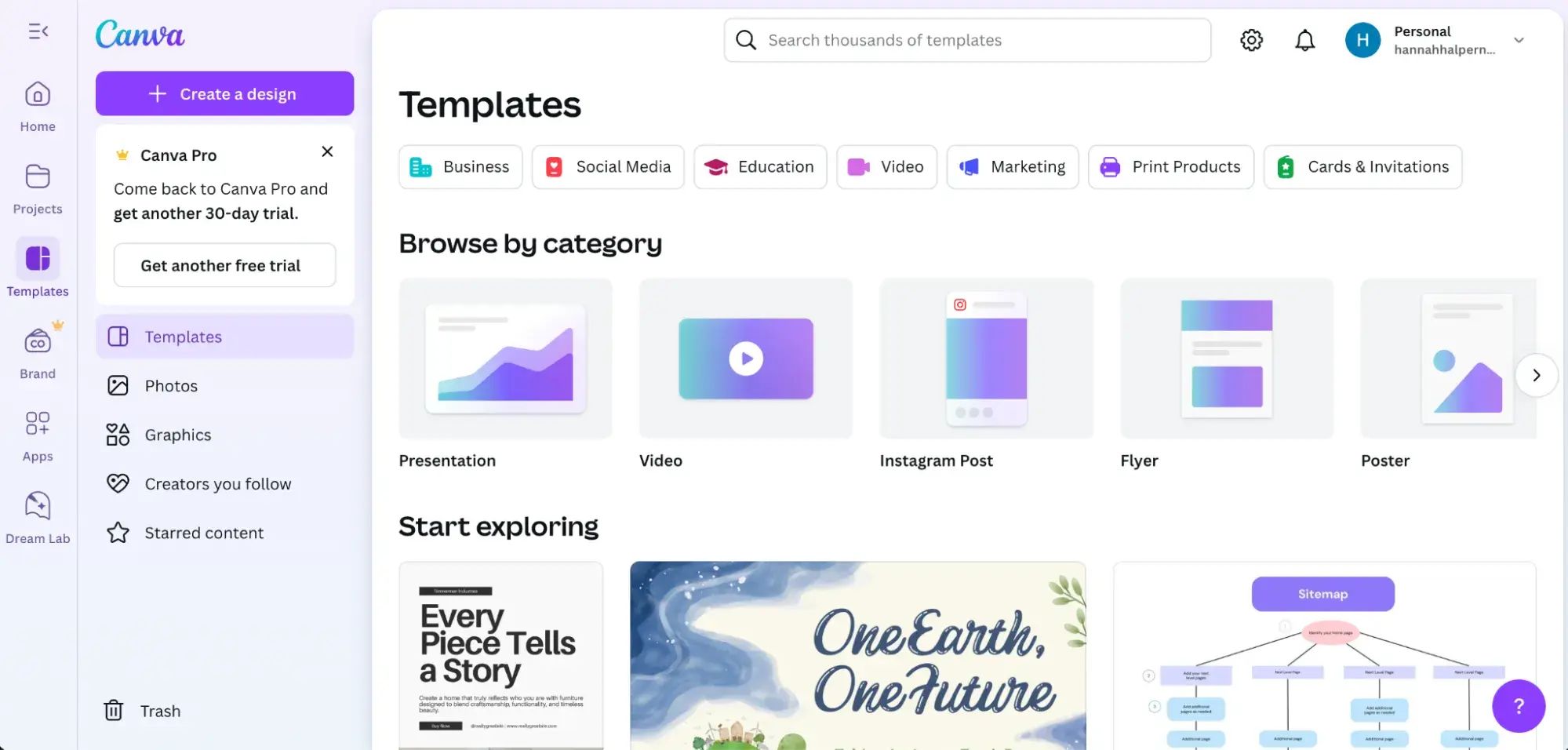
Canva is hands-down one of my favorite small business marketing tools. I’ve been using Canva for years and I still recommend it to almost every small business I work with. It’s one of the easiest ways to create polished, professional-looking content without needing a designer (or any real design skills at all).
Whether I’m putting together a blog header, a social post, or a slide deck, Canva is my go-to. The drag-and-drop interface is super intuitive, and the templates make it easy to stay on-brand without starting from scratch every time. I’ve even used it to build mockups for landing pages and marketing emails.
It’s especially great for small teams or solo founders who want their brand to look put-together without blowing the budget — or spending hours in Photoshop. If you’re just getting started, it’s one of the most beginner-friendly tools out there. Plus, their free version is great too!
2. Wix
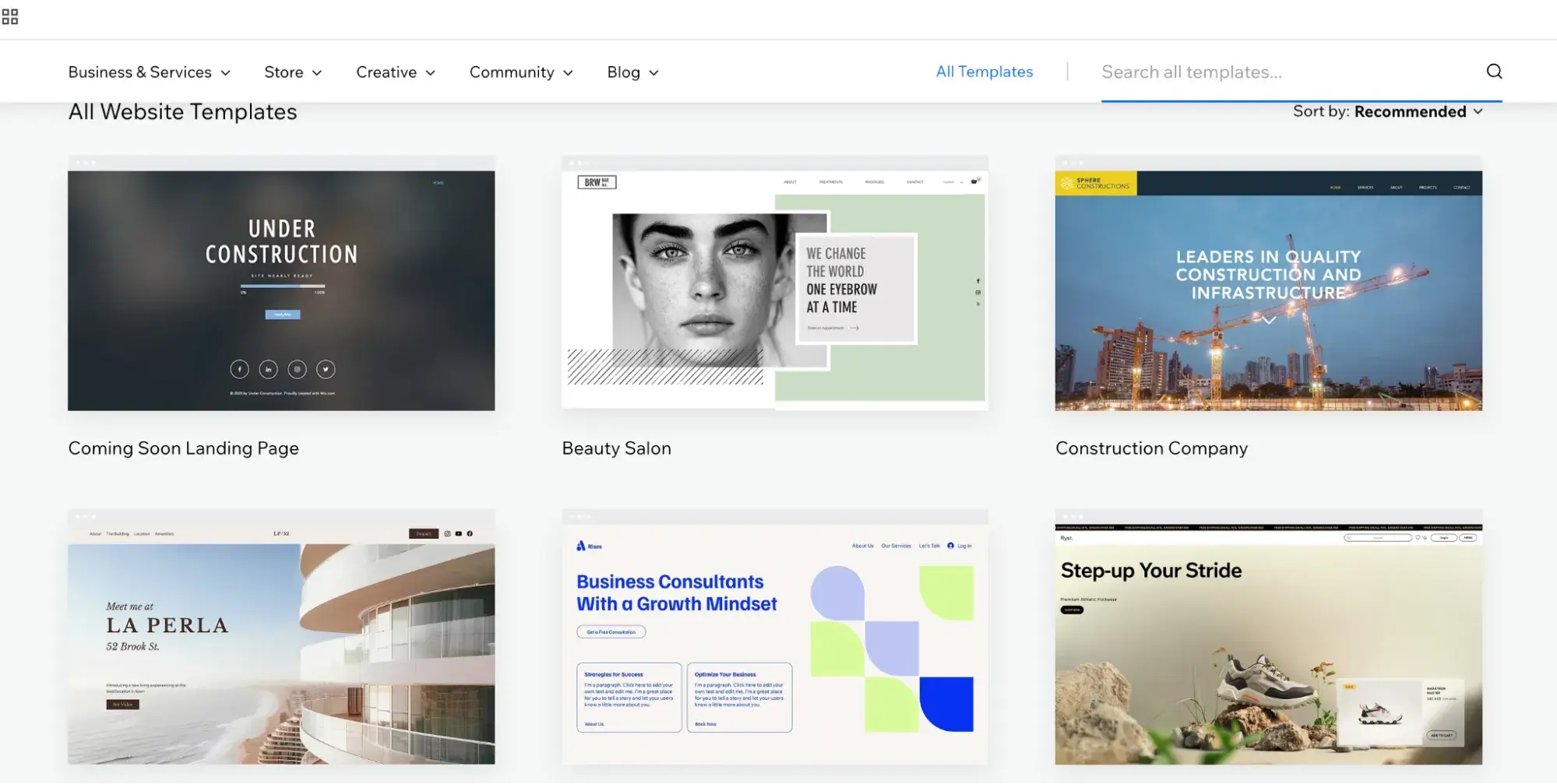
I’ve used Wix a few times over the years to help small businesses get a website up and running — and it’s one of the easiest ways to launch something that looks clean and professional without hiring a developer.
There’s a bit of a learning curve if you’ve never built a site before, but it’s pretty quick to pick up. The drag-and-drop editor gives you a lot of flexibility, and there are tons of templates you can customize for different industries and use cases. I’ve used it to help teams launch everything from one-page lead capture sites to more detailed product pages.
One thing I appreciate is that Wix also offers the option to get direct support or design help from their team. That’s a nice safety net if you run into something tricky or want a bit more polish. If you’re looking for a solid “set it and forget it” website option, this is a great place to start.
3. Hubspot Marketing Hub
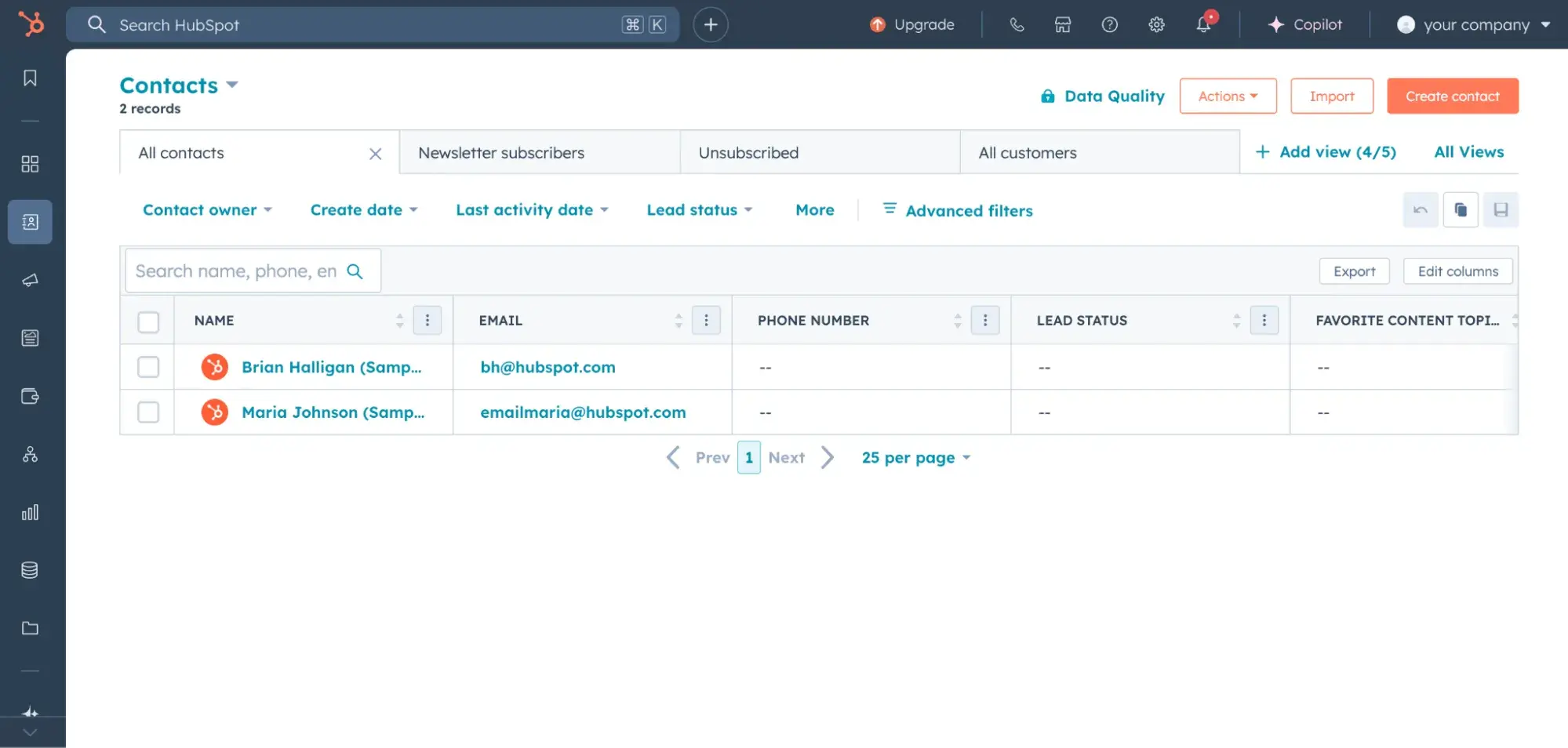
I personally believe that if you're looking for an all-in-one platform to manage email, automation, forms, and more, HubSpot’s Marketing Hub is the best. I’ve used it with small teams that needed to get serious about marketing without stitching together a bunch of tools, and it made a huge difference. And that’s my honest opinion!
The email editor is easy to use, and like I said earlier, you can segment your list, build workflows, and track results without needing a developer or a full-time ops person. I especially love the way it integrates with HubSpot CRM so you’re not just sending emails into the void — you’re actually tracking what happens after someone clicks.
One team I worked with used HubSpot to launch their first email newsletter and lead nurture flow. It was intuitive enough for them to set up quickly, but powerful enough to scale as they grew. If you’re planning to grow your list and need more than the basics, this is definitely something worth exploring.
4. Later
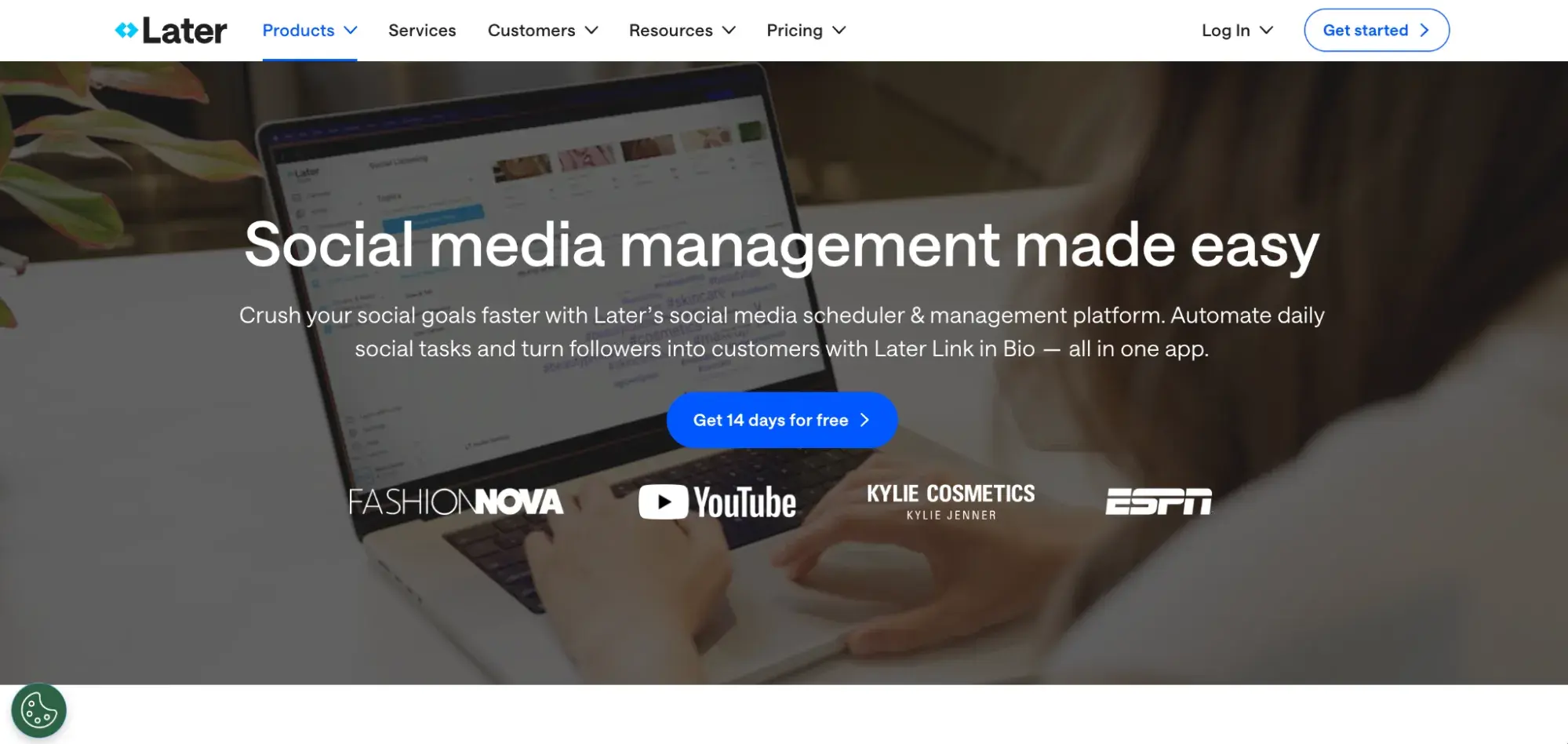
If you’re trying to stay consistent on social media — and not just post when you remember to — Later is one of the most approachable scheduling tools I’ve used. It’s especially great for visual planning, which makes it a nice fit for platforms like Instagram and Pinterest.
I’ve used Later to plan and schedule content across multiple channels, and it’s helped me (and clients) stay organized without needing to log in and post manually every day. The drag-and-drop calendar makes it easy to see how your content is spaced out, and I like that it includes link-in-bio functionality and basic analytics in the free plan.
If you’re building your presence on social media and want a low-lift way to stay consistent, Later is a great starting point. You can plan ahead, track what’s working, and keep your content on brand — even if it’s just you running the show.
5. Google Analytics & Search Console
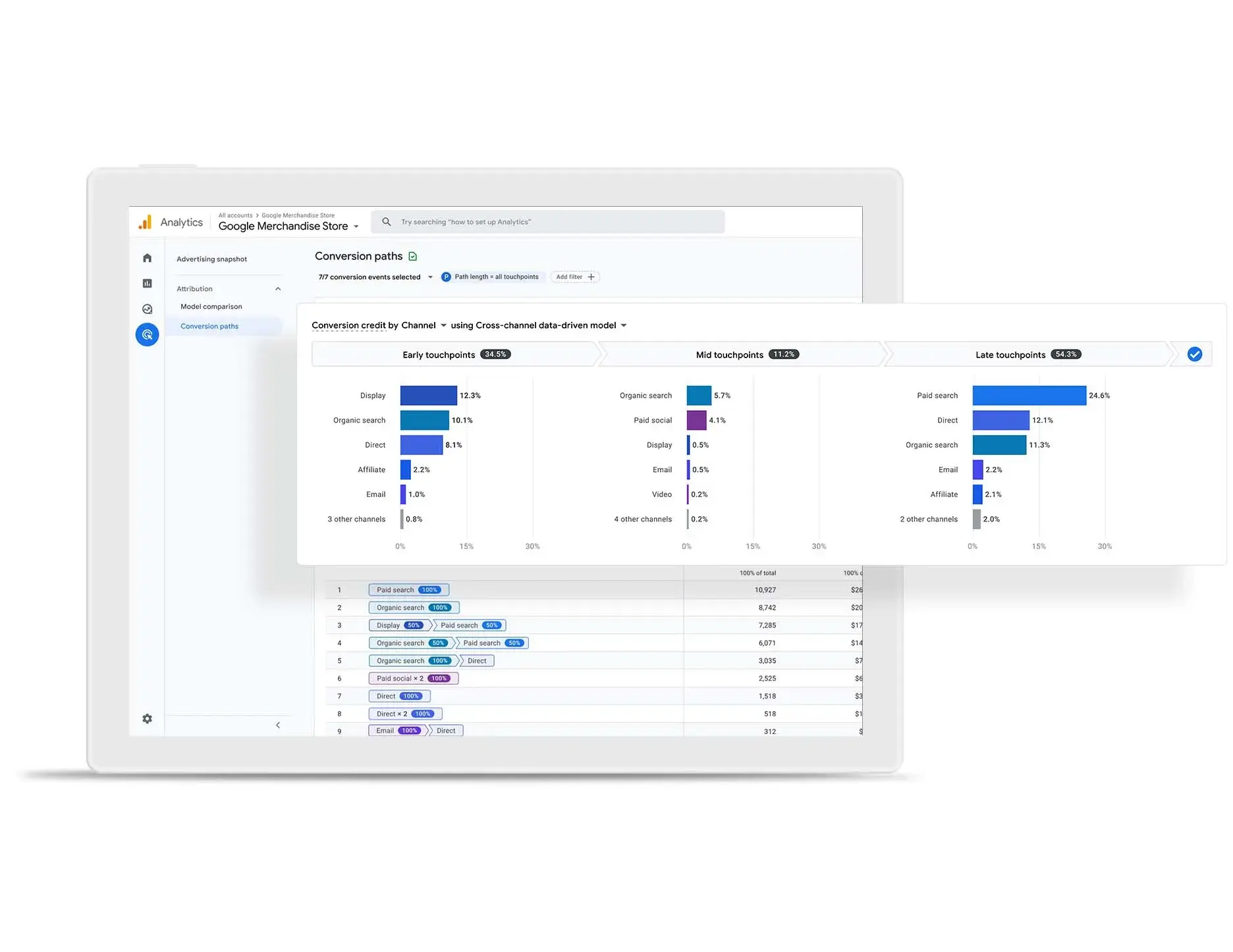
Technically two tools, but these are some of the first things I set up anytime I launch a new website. They’re free, surprisingly powerful, and give you a clearer picture of what’s actually happening when people visit your site.
Google Analytics (GA4) helps you understand how people are engaging with your content — what pages they’re visiting, how long they stay, where they drop off, and what’s driving conversions. If you’ve ever wondered “Is anyone actually reading this?” or “Which blog post is bringing in traffic?” GA4 has your answers.
Search Console, on the other hand, gives you insight into how your site appears in Google search results. I use it to see what keywords I’m ranking for, what pages are getting impressions, and where there are opportunities to improve SEO. It’s also great for spotting technical issues that could affect your visibility.
If you’re investing time into content or SEO, these tools are essential. They help you stop guessing and start optimizing.
Start Marketing Your Business Today
If you’ve made it this far, take that as your cue to get started (or keep going). I’ve worked with a lot of small businesses and startups over the years, and I’ve seen how much impact even the smallest marketing effort can make.
Sometimes it’s one blog post that starts bringing in search traffic. Or a one-page site that helps convert that first customer. Or a welcome email that turns into a real relationship. You don’t need a perfect strategy to start — you just need a place to begin.
Whether it’s publishing your first post, testing a new tool, or finally organizing your contacts, each small move helps build momentum. And that momentum matters.
The effort you put in today will keep paying off long after the post goes live.
Good luck — you’ve got this!
Editor’s note: This post was originally published in February 2017 and has been updated for comprehensiveness.
Marketing Strategy



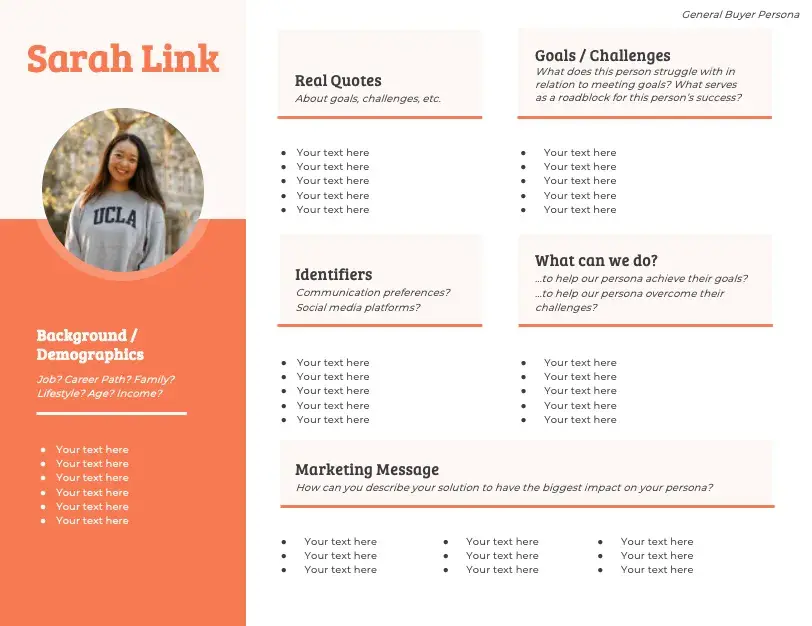
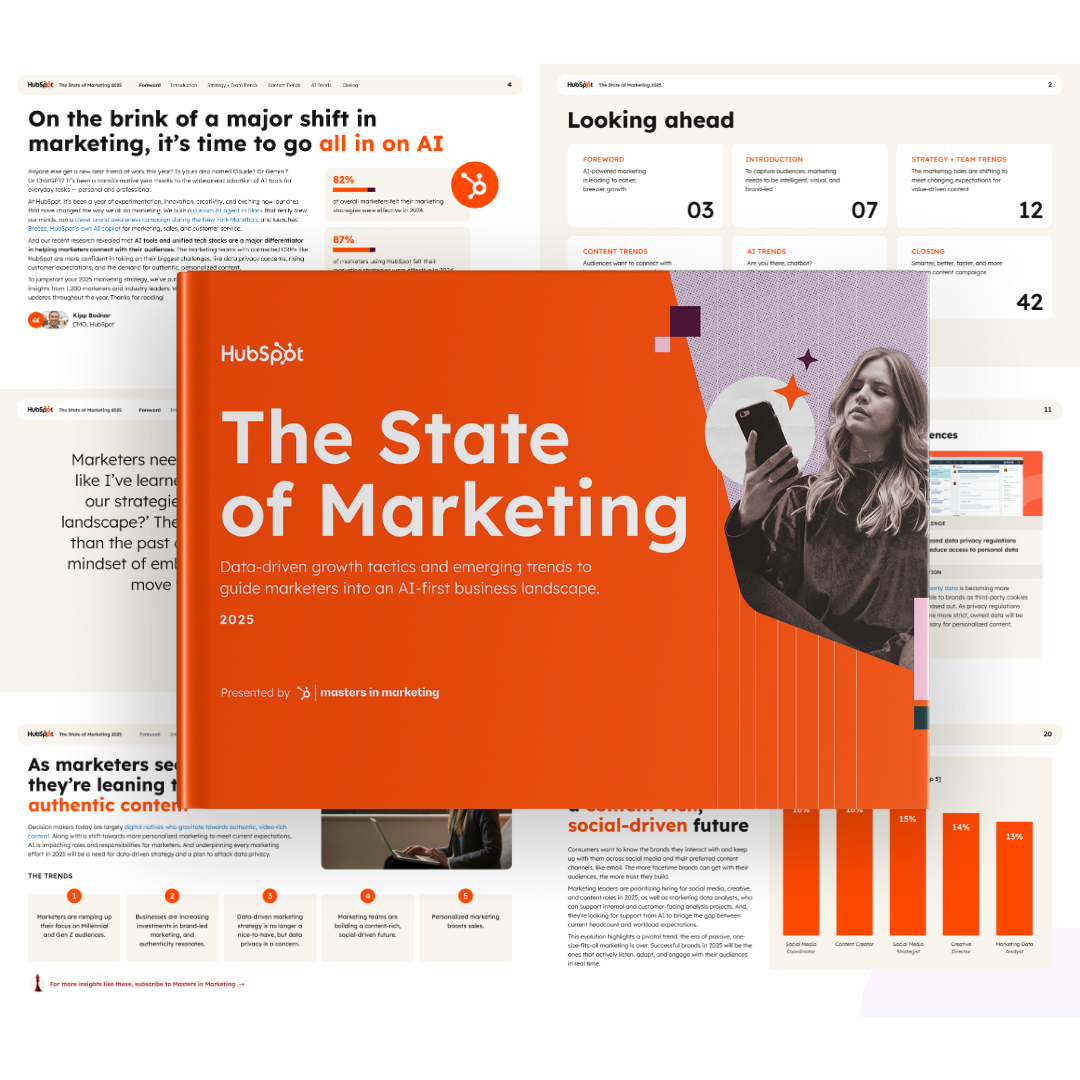

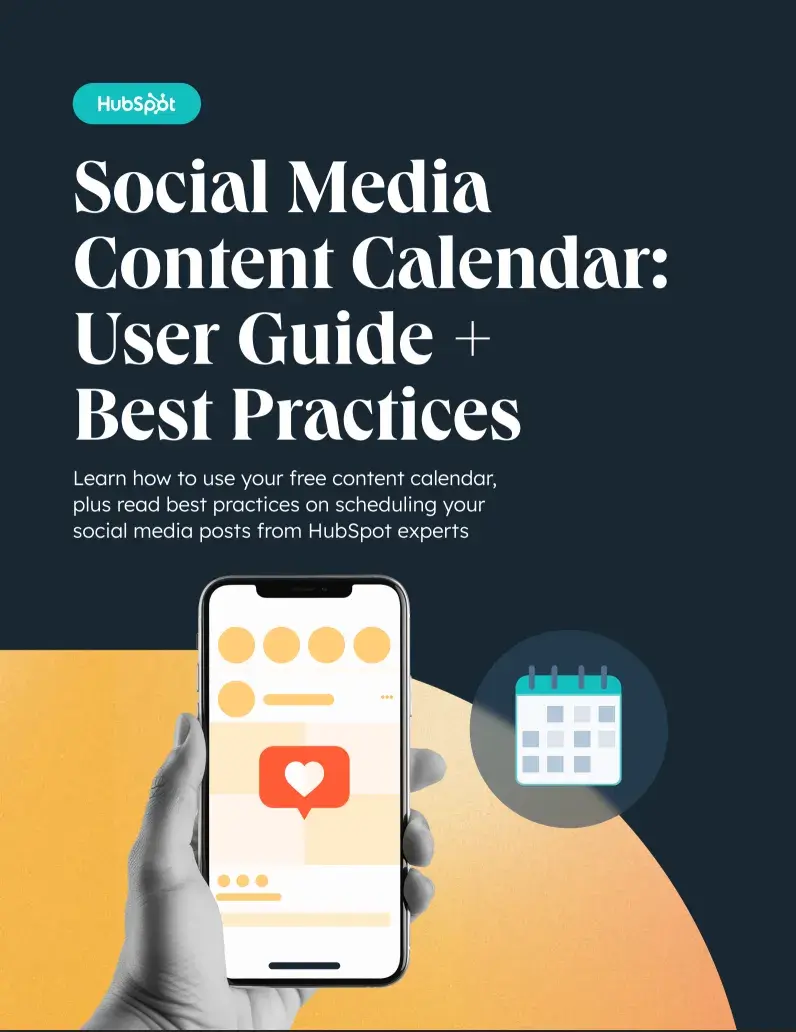
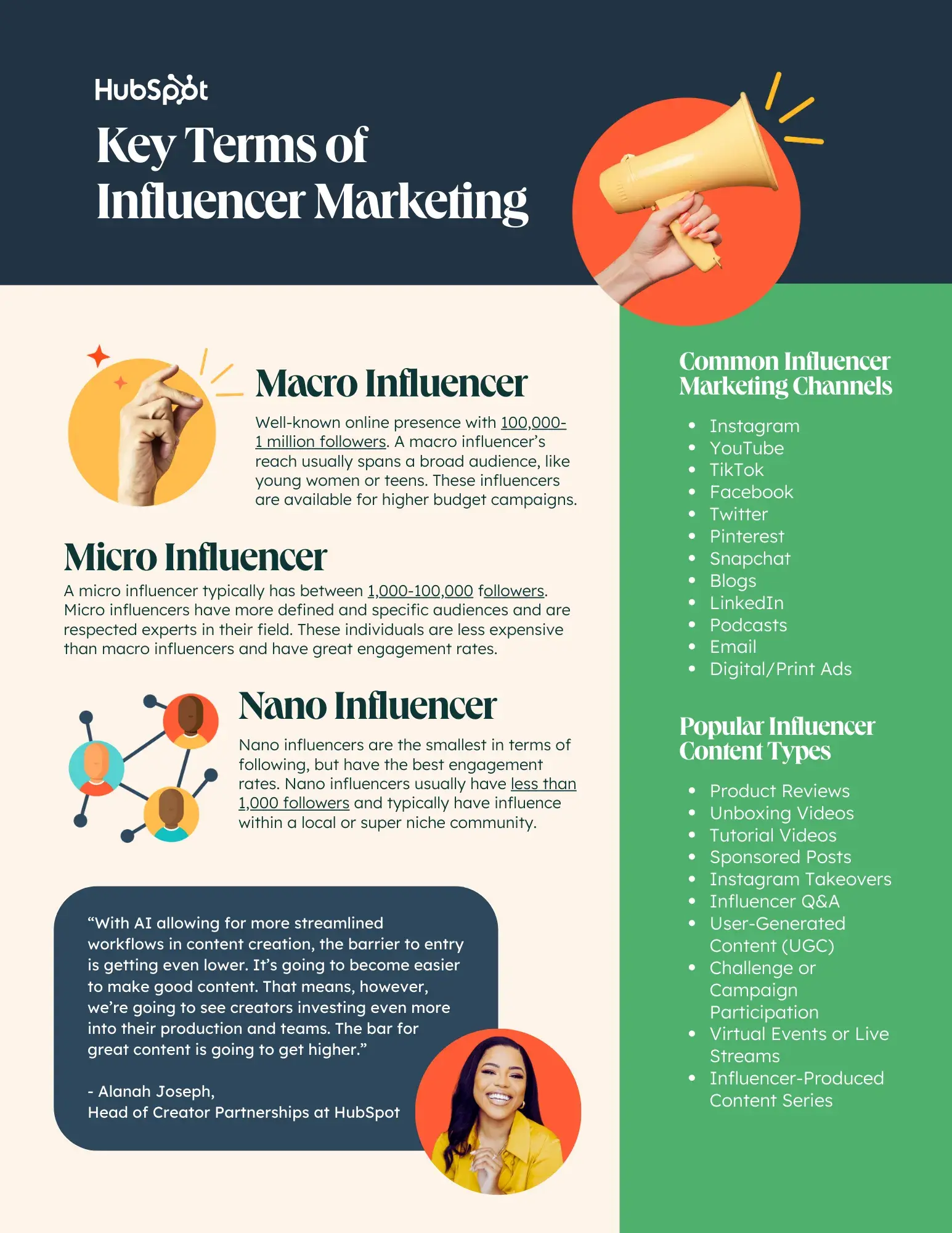
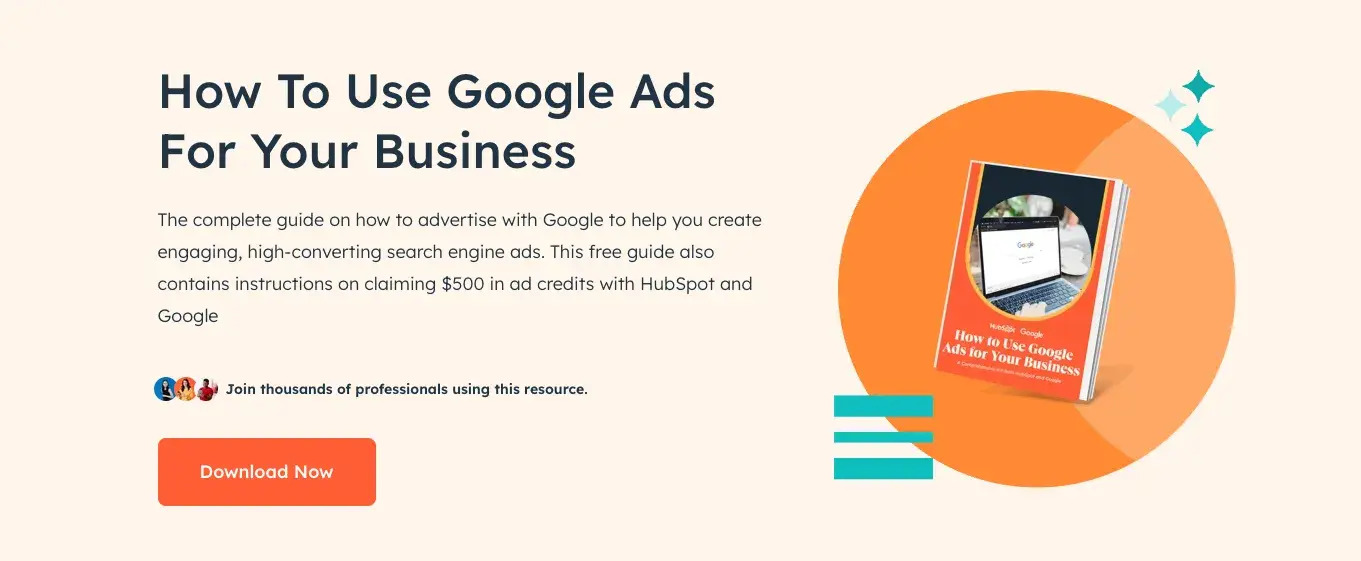





![The state of inclusive marketing in 2025 [new data + expert insight]](https://53.fs1.hubspotusercontent-na1.net/hubfs/53/inclusive-marketing-report.webp)
![How marketers are navigating a possible recession (and advice about what you should do during it) [new data]](https://53.fs1.hubspotusercontent-na1.net/hubfs/53/image12-May-27-2025-02-18-19-8390-AM.png)


![Cultural Marketing: What It Is & How to Do It The Right Way [According to Experts]](https://53.fs1.hubspotusercontent-na1.net/hubfs/53/Untitled%20design%20-%202025-04-03T163531.949.jpg)
![How to Create a Complete Marketing Strategy [Data + Expert Tips]](https://53.fs1.hubspotusercontent-na1.net/hubfs/53/marketing-strategy.webp)